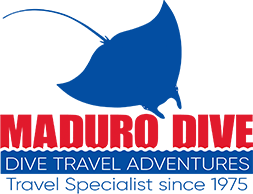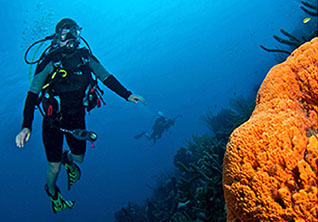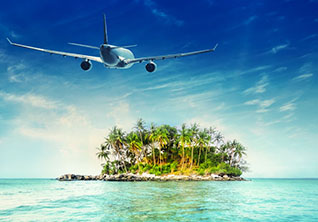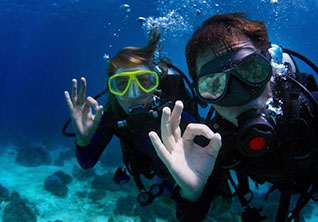Cayman Brac: Divers, Hikers, Bikers, and Cliff Hangers
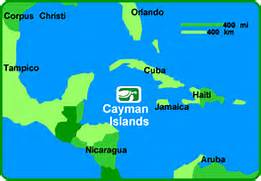
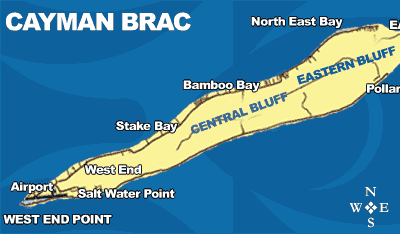
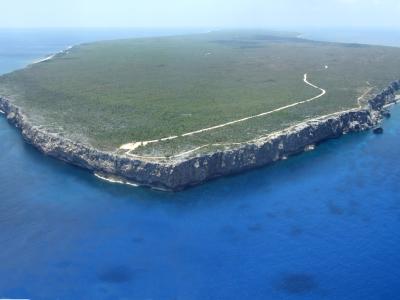
Cayman Brac is an island barely 19km (12 miles) long and 2km (2 miles) wide and is situated 8km (5 miles) east of Little Cayman and 145km (90 miles) northeast of Grand Cayman. This small island that is sea level on the southwest end has a limestone outcrop “the Bluff” that rises some 43m (141 ft) on the northeast end. There are some sandy beaches in front of some hotels and resorts, but for the most part, the less frequented beaches require good walking shoes to traverse. Good shoes are recommended to hike on the trails that take you past the 180 acre parrot sanctuary; mornings and evenings are the best time to see the parrots in flight. The shoes will help climb the stairs and walk inside various caves where pirates once hid their booty, and along the lighthouse path to view the birds such as frigates and brown boobies nesting on the cliff sides. Brown boobies are easy to identify, just look at their chest. A horizontal straight line separates their chest region from their absolutely white underbelly. Their lightly yellow colored beak and feet tend to get over looked. Good shoes may also come in handy if you plan on cycling around the island, renting mopeds, rock climbing, or hanging over the sides of cliffs too.
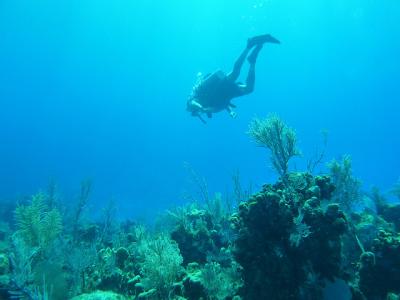
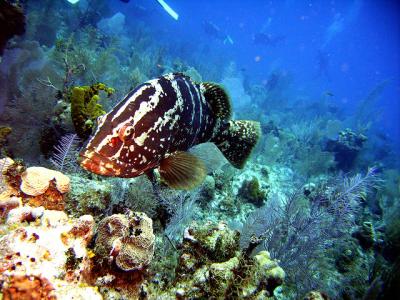
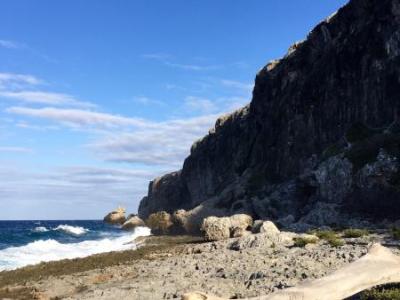
Diving is a must for this small island as here you will find walls, sand chutes, tunnels, and caverns to explore much like one would expect to find on Grand Cayman, plus Cayman Brac is home to at least four wrecks including the 330ft long 42ft wide M/V Capt. Keith Tibbetts which was formerly a Russian Brigadier Class frigate #356. It was sunk in 1996, sitting straight up in about 27m (89ft) of water, but mover nature tried to rip off the from end and eventually tilted the front of the ship over at a 45º angle, and the middle section was torn up and scattered. The aft section still sits straight up. It rests 200m (660ft) from shore, and you may see people snorkel out to the wreck, but it is easier to save time and energy by diving the wreck from a boat. Some 24 of the 46 dive sites around the island can be reached as shore dives, and many of the diving areas are great for snorklers too. Over the last 20 years, The M/V Tibbetts has turned into an artificial reef and is home to hundreds of different forms of fish and invertebrates.
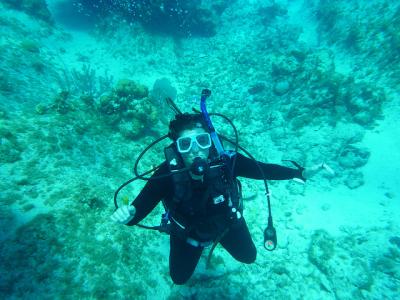
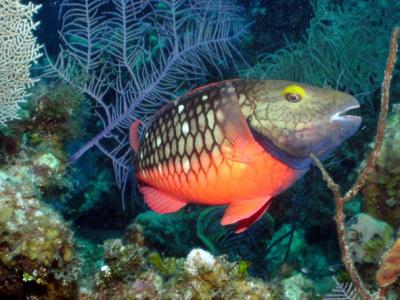
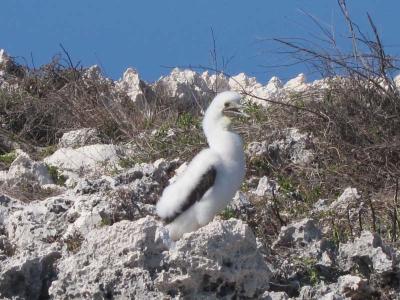
If colorful corals, tube sponges, soft corals, nurse sharks, reef sharks, sea turtles, tarpon, goliath groupers, stingrays, lobsters, octopus, and green moray eels are what you want to see, photograph or video, then Cayman Brac has got you covered. One of their most popular dive sites is East Chute. This is really a two for one dive site as you can descend past the eel gardens down the wall through semi-closed tunnels down to 90ft and look for life on the wall as well as pelagics off the wall and then come up the east chute to the 65ft long Mariner wreck in 45ft of depth for a little macro photography. The Gilembo dive site is reported by an honest fisherman friend to have a “super male” 5ft long rainbow parrotfish. Treehouse Reef is noted for its two pinnacles and sandy bowl, Treasure Trove is known for its staghorn, elkhorn, and sponges, Bert Brothers Boulders also has large elkhorn coral heads on top of grooves and ridges with soft corals and sponges in the gullies. Wilderness Wall is known for rope vase and tube sponges, snapper, and angelfish.
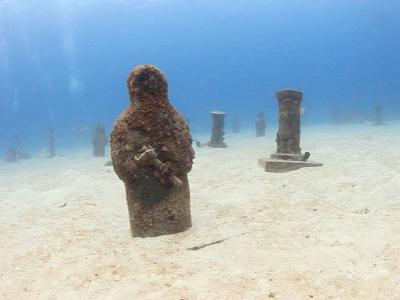
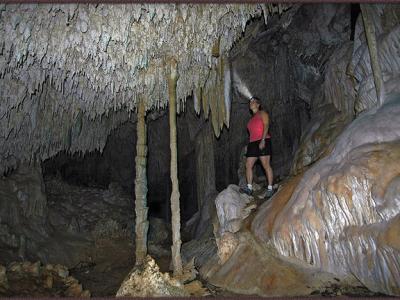
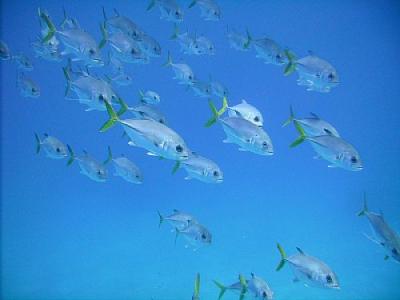
Now, Radar Reef used to be the place to go to do a night dive to find shrimp, arrow crabs, lobster, and tarpon next to the Jetty at Stake Bay, but the local artist named “Foot” built the Archway to Atlantis, the Elder Way (statues with local faces), and the Circle of Light and the area became renamed as Atlantis. of course a hurricane came through and had to mess things up a little, but it is still a very surreal or dream like site.
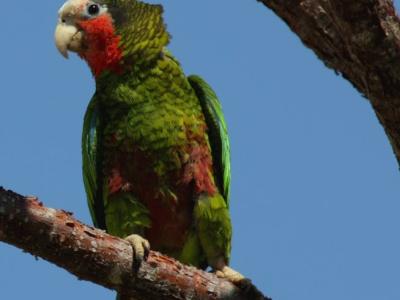
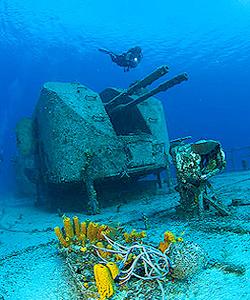
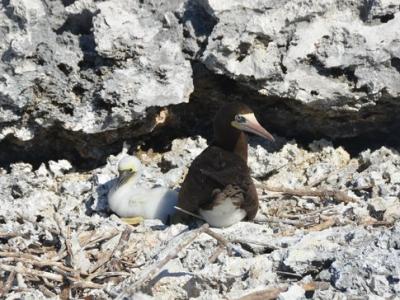
Oh, the other wrecks are the 60ft long Kissimmee tug boat that lays upside down in the sand and Prince Federick’s Wreck, a schooner, that sunk in the 1800’s. Most of the wood has been eaten away, but parts of a mast, anchor chains, four anchors, and boilers are still 20-40ft underneath two hundred years of coral growth.
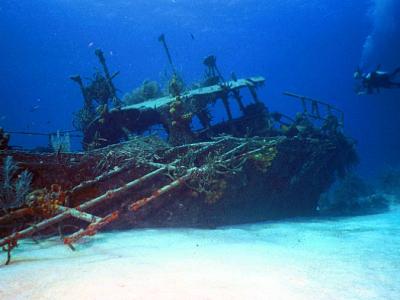
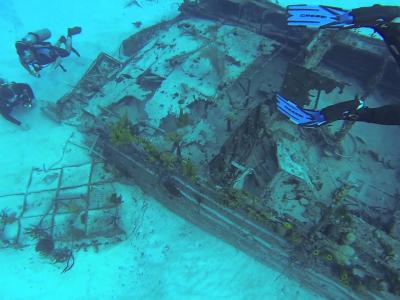
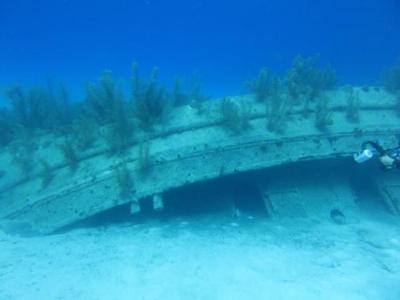
We should mention, that because Little Cayman Island is a mere 5 miles away, dive trips over to Bloody Bay Wall can also be arranged (weather permitting), but book in advance!
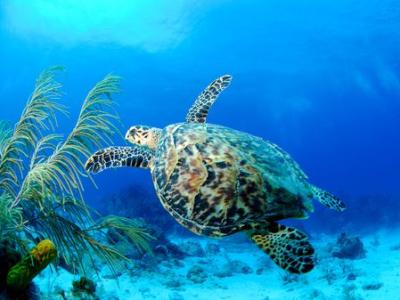
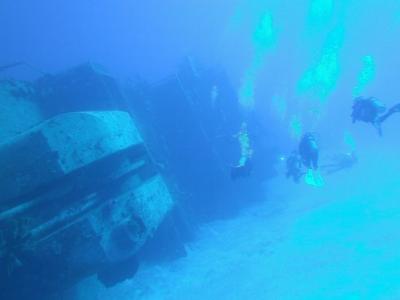
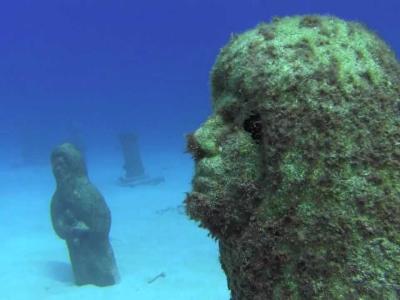
Back to land activities, bring your dive light along if you want to explore the caves. Skull Cave or Half Ground Cave has Jamaican fruit bats that you can see if you shine your light overhead. Peter’s Cave has a nice view of the town and was once the gathering point of the islanders during the 1932 hurricane. You can learn more about this catastrophe by visiting the oldest museum of the Cayman Islands, the Cayman Brac museum in Stakes Bay. There are some 2100 residents on the island and there is also a hospital and chamber. There are small grocery stores, 16 restaurants on the island offering a variety of local Caribbean and international cuisine as well as mandatory after dive or activities libations. So if you plan to explore by cycle, moped, car or on foot, the roads are pretty much yours. The beaches and hiking trails are pretty much yours too. You may have the urge to go deep sea fishing or rock climbing or you may want to hang from ropes over a cliff or during lobster season go catch a lobster as no license is required but one thing is certain, you will quickly adapt to waving back to the locals. For such a small friendly island there is lots to do at your pace, but here, among all the activities, diving is a must; formality not so much.
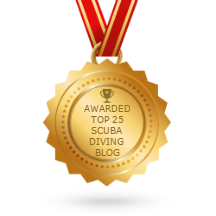
Recent Posts
- Eastern Malaysia, Sabah, Sipadan & More
- Ghost Pipefish, Pipefish, Seahorses, and Sea Dragons
- Australia Queensland and the Great Barrier Reef
- Tioman Islands, Malaysia
- The Riviera Maya
- The Peter Diving System
- The Bay Islands, Roatan, Utila, Guanaja, and more.
- The Cuttlefish; The Undisputed Master of Camouflage.
- The Maldives: A Garland of Islands in the Indian Ocean
- Frogfish, The Overlooked Camouflage Artist
Categories
- Australia
- Bahamas
- Bay Islands
- Belize
- Blue Hole
- Bonaire Diving
- Borneo
- Cayman Brac
- Cayman Islands
- Cozumel
- Curacao
- Cuttlefish
- Dive Destinations
- Dive Equipment
- Dive Liveaboards
- Dive Resorts / Properties
- Dive Travel
- Dive Travel Deals
- Diver Wellness
- Dolphins
- Dominica
- Eagle Rays
- eagle rays
- Family Travel
- Fiji
- Galapagos Islands
- Great White Shark cage diving
- Guanaja
- Honduras
- Indonesia
- Infographics
- Isla Mujeres
- Learning to Dive
- Little Cayman
- Maduro Dive Newsletter
- Malaysia
- Maldives
- Manta Rays
- Marine Life
- Mexico
- Micronesia
- Muck Diving
- Myamar
- Palau
- Papua New Guinea
- Pelagics
- Philippines
- Pinnacles
- Polynesia
- Reefs
- Riviera Maya
- Roatan
- Saba
- Sabah
- Scuba Diving
- Scuba Gear Reviews
- Scuba News/Events
- Scuba Training & Education
- Sea Legends
- sea lions
- Sea of Cortez
- Sharks
- Single Travel
- Sipadan
- Socorro Islands
- South Africa
- Specialties
- ST. Kitts
- Stingrays
- Tahiti
- Thailand
- The Bucket List
- Tobago
- Truk Lagoon (Chuuk)
- Turks and Caicos Islands
- Turtles
- Uncategorized
- Underwater Photography
- Underwater Video
- Utila
- Walls
- Whale Sharks
- Whales
- Wreck Diving
- Wrecks
- Yap
Archives
- January 2024
- April 2023
- March 2020
- March 2019
- January 2019
- November 2018
- September 2018
- July 2018
- May 2018
- March 2018
- January 2018
- October 2017
- September 2017
- June 2017
- April 2017
- February 2017
- January 2017
- October 2016
- August 2016
- July 2016
- May 2016
- March 2016
- February 2016
- January 2016
- December 2015
- August 2015
- June 2015
- April 2015
- January 2015
- November 2014
- July 2014
- April 2014
- February 2014
- December 2013
- November 2013
- October 2013
- September 2013
- August 2013
- July 2013
- June 2013
- May 2013
- April 2013
- March 2013
- February 2013
- January 2013
- December 2012
- November 2012
- October 2012
- September 2012
- August 2012
- July 2012
- June 2012
- May 2012
- April 2012
